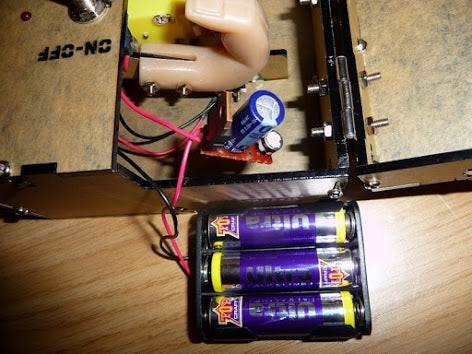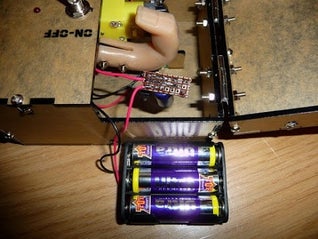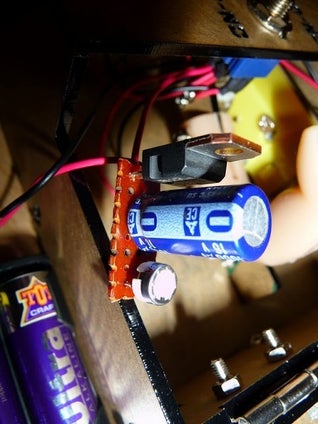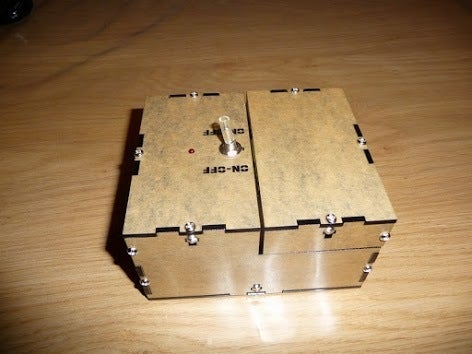
This instructable shows you how you can improve your useless box, when it is reacting way too fast so you have little time to remove your finger after toggling the switch to activate the box..
Step 1: Introduction
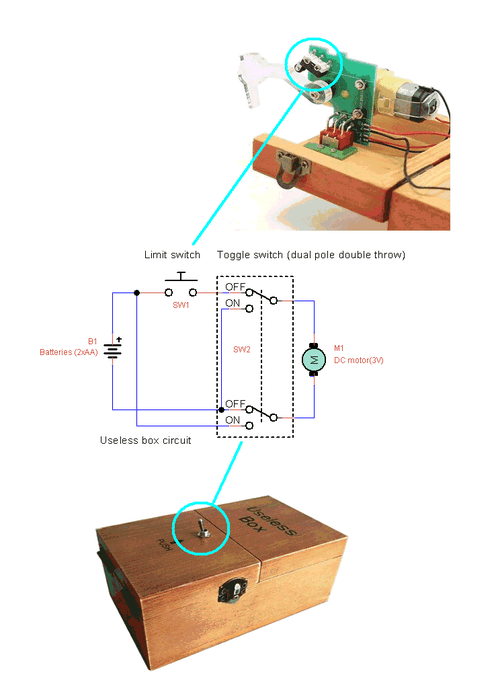
In the start or home position, the mechanical finger, that is connected to a gear motor M1, is pushing against micro switch SW1, so it is pushed open. That means it is switched off and not conducting. SW1 is located inside of the box.
The manual operated toggle switch SW2, that is on the outside of the box, is in the OFF position. When the user toggles SW2 manually to the ON position, the motor is activated and starts moving. The mechanical finger that is attached to the motor will move out of the home position and releases SW1, so SW1 gets switched on. The motor continues to run until the mechanical finger has pushed SW2 back to the OFF position. When SW2 is in the OFF position (SW1 is still switched on), the motor reverses direction and starts moving the mechanical finger back to the start position. When the mechanical finger has reached the start position again, it pushes SW1 into the off position. The current to the motor is now interrupted by SW1, so the motor stops and stays in the home position, until SW2 is manually switched in the ON position again.
Step 2: How It Works
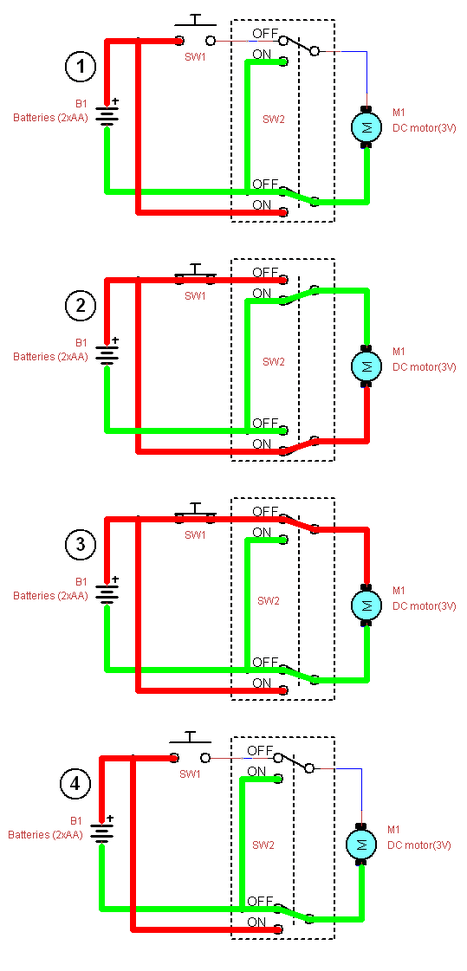
State 1
In the home position, the mechanical finger pushes the microswitch SW1 open, so it is not conducting. The toggle switch SW1 is in the OFF position. The electrical circuit is interrupted and the motor does not get any current so it is not running.
State 2
Toggle switch SW2 is manually switched to the ON position by the user. Now current starts flowing through the motor and the motor starts running in clockwise direction. The motor moves the mechanical finger towards toggle switch SW2. As soon as the mechanical finger leaves the home position, microswitch SW1 is closed This has no influence on the current state.
State 3
The mechanical finger has reached toggle switch SW2 and pushes this switch into the OFF position. Microswitch SW1 is still closed. The motor reverses direction since the current is now flowing into the opposite direction. So the motor starts running counter clockwise, thereby moving the mechanical finger away from SW2 and back towards the home position.
State 4
The mechanical finger now has reached the home position again and pushes micro switch SW1 open, so SW1 is switched off. This interrupts the current to the motor and the motor stops. The mechanical finger is now back in the home position, waiting for the user to toggle SW2 in the ON position so the whole cycle starts over again
Step 3: How to Improve (delay Circuit)
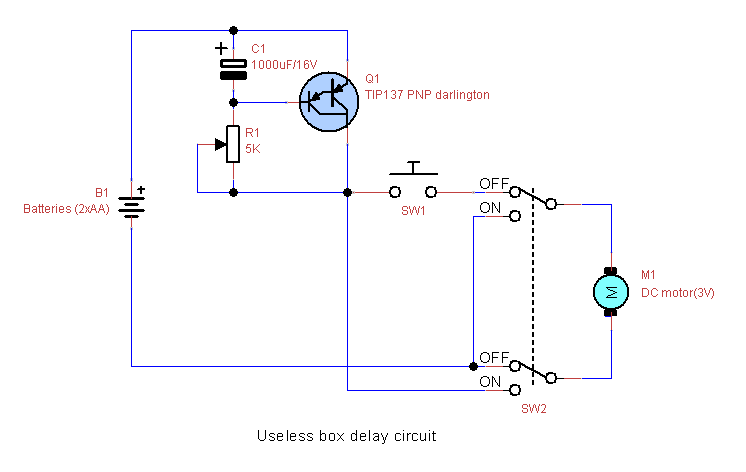
After i assembled the useless box and tried it, i found that the motor was moving way too fast. So when you toggled the switch, the switch was pushed back to the initial state almost instantly before you had the chance to retract your finger.
To solve that problem, i added the the following circuit that causes an adjustable delay. This delay prevents that the motor starts moving right away so you have the time to move your finger out of the way. The delay is created by capacitor C1, which is charged via R1`at the moment that SW2 is toggled to the ON position manually by the user, connecting the motor to the circuit. At first instant, C1 is not charged, so the voltage over the base-emitter junction of the darlington transistor Q1 is 0 and Q1 will not conduct. When C1 is charging and the voltage over C1 reaches about 1.2V, the darlington transistor Q1 will start conducting. With R1, the delay can be adjusted, because R1 determines the charge current for C1. If you want a longer delay, the 5K potmeter R1 can be replaced with a 10K potmeter to get maximum 2 seconds delay.Or you can double the value of C1 to 2200uF, but that might get too bulky to fit into the box. I used a darlington transistor to minimize the base current in order to minimize the load that the transistor forms on the RC network. Darlington transistors have a very high beta, i.e. current amplification = ratio of the collector current and the base current. A logic level P-MOSFET can also be used because it has a low gate voltage threshold (1 to 2V). A standard P-MOSFET has a gate threshold voltage between 2 and 4V, so it is useless for this circuit since it is powered with 2xAA batteries = 3V. Furthermore a MOSFET will not load the RC circuit, because its gate is voltage driven. With this circuit in place, the motor is not started instantaneous when SW2 is toggled by the user,but is delayed by a period that is set by R1 (between 0 and about 10 seconds).
Step 4: Pictures
